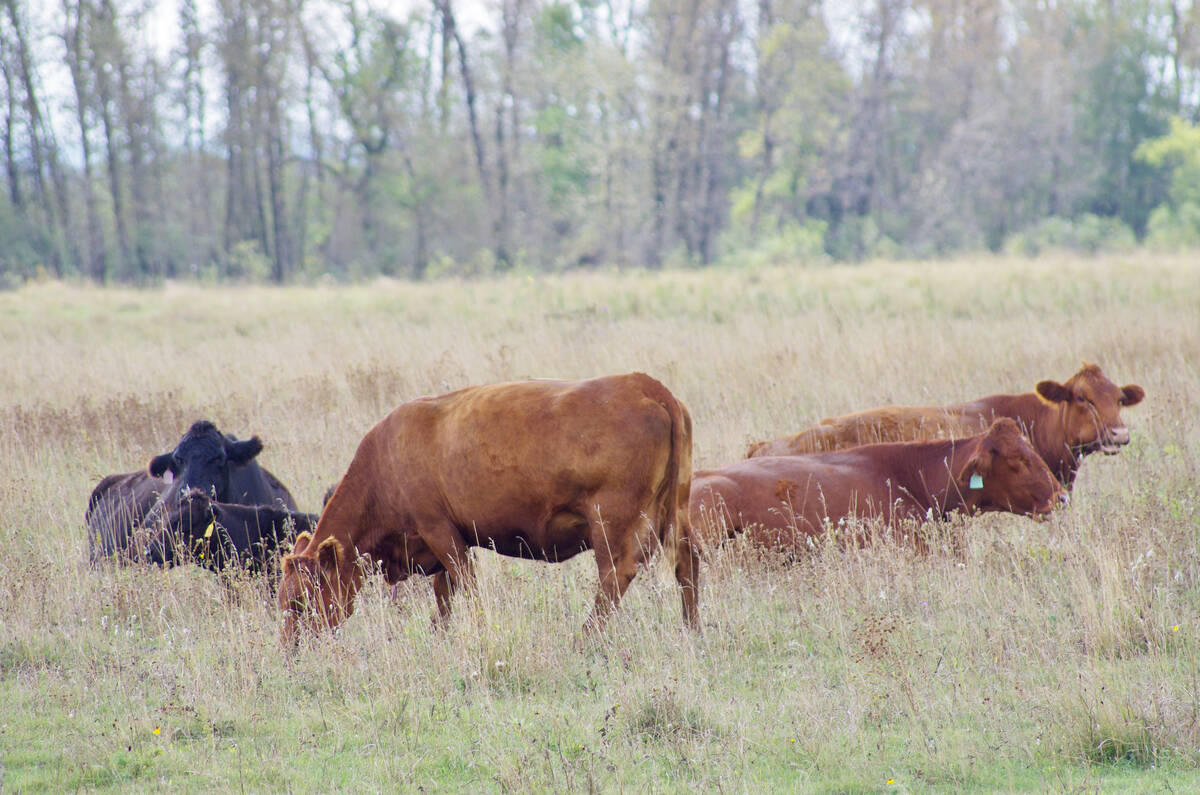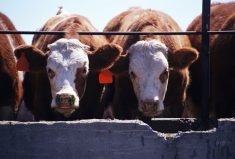Western Canadian feeder cattle prices were quite variable over the past week. Stronger demand was noted in the major feeding regions such as southern Alberta where top-quality steers weighing just over 600 pounds reached $288. Manitoba prices were also steady to $3 higher on buying interest from Eastern Canada and south of the border.
However, in central Alberta and Saskatchewan, the market felt sluggish, with prices down $2 to $4 on average, especially in the 700-lb.-plus category. In east-central Alberta, mixed steers averaging 680 lbs. traded for $282.
It appears feedlot managers are focused on quality features and prefer to look at the cattle before placing orders. Efficient gainers reflected a small premium over more fleshy-type cattle. Backgrounding operators continue to sell a fair amount of cattle direct to the finishing feedlot. This may also be contributing to the softer tone in the heavier weight categories on cattle moving through the ring.
Read Also

U.S. livestock: Chicago cattle futures climb on post-Thanksgiving trade
Chicago | Reuters – Chicago Mercantile Exchange’s live and feeder cattle futures ticked up on Friday in a day of…
Alberta packers were buying fed cattle at $189 this week; the weaker Canadian dollar, along with a jump in U.S. wholesale beef prices, set a positive tone. Fed cattle prices are approximately $4 above break-even pen close-out values, but there is concern above the finished market for the summer months. Seasonally, fed cattle prices peak in late March, which usually brings on a surge in demand for replacement cattle.
U.S. feeder cattle values have come under pressure, because feeding margins in the southern Plains are now in negative territory. Prices on the Canadian Prairies have held value due to the lower exchange rate, with the market focused on quality reflecting appropriate discounts. The Canadian dollar has stabilized at the lower levels and the feeder market may have run its course for the time being. From Jan. 1 through Feb. 14, Canadian feeder cattle exports to the U.S. were up 27 per cent over year-ago levels.
Looking forward, I feel prices in Western Canada will be more inclined to follow the U.S. market because of the larger export program. October feeder cattle futures are about $35 off the highs and there is concern about U.S. corn production, with analysts projecting a three to four per cent year-over-year acreage decrease. There appears to be a fair amount of uncertainty for the fall time frame.
— Jerry Klassen is a commodity market analyst in Winnipeg and maintains an interest in the family feedlot in southern Alberta. He writes an in-depth biweekly commentary, Canadian Feedlot and Cattle Market Analysis, for feedlot operators in Canada. He can be reached by email at [email protected] for questions or comments.
















